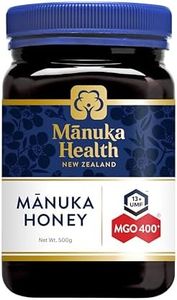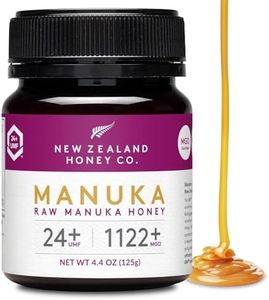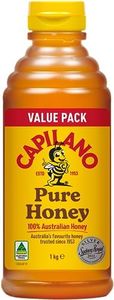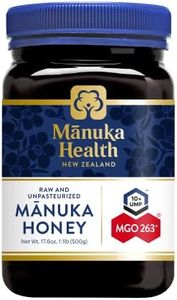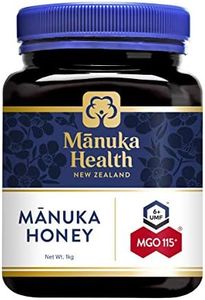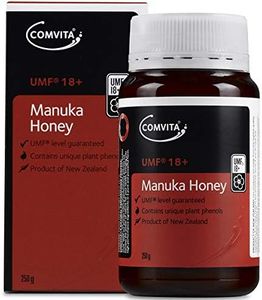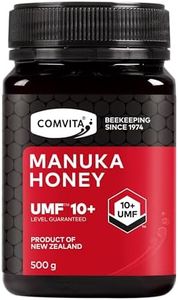We Use CookiesWe use cookies to enhance the security, performance,
functionality and for analytical and promotional activities. By continuing to browse this site you
are agreeing to our privacy policy
10 Best honeys
From leading brands and best sellers available on the web.Buying Guide for the Best honeys
Choosing the best honey can seem tricky because there are many varieties, sources, and claims on the label. The key to finding the right honey is to consider what you’ll use it for—cooking, sweetening tea, as a home remedy, or simply for enjoying its flavors. You should also pay attention to how natural and pure the honey is, as well as its flavor profile and texture. The right honey should balance taste, texture, and purity to match your preferences and intended use.Type (Raw, Pasteurized, Filtered, Unfiltered)The type of honey refers to how it has been processed before reaching store shelves. Raw honey is minimally processed and retains most of its natural enzymes, nutrients, and possible traces of pollen, which some people value for health reasons. Pasteurized honey has been heated to kill bacteria and prolong shelf life, but this can reduce some of its beneficial properties. Filtered honey has been strained to remove impurities and particles, making it clearer but possibly removing some natural elements. Decide which is best for you based on whether you prioritize nutritional value and natural features (choose raw or unfiltered) or prefer a smooth, consistent product with longer shelf life (choose pasteurized or filtered).
Source & Floral OriginThis refers to the type of flowers bees collected nectar from to make the honey, such as clover, acacia, manuka, or wildflower. Each origin gives the honey a unique flavor, aroma, and color. Some honeys, like manuka, are prized for purported health benefits, while others, like clover, are mild and versatile. Choose a floral origin based on your taste preferences and intended use: stronger, more distinct flavors work well in marinades or spreads, while milder honeys are great for sweetening drinks or baking.
Texture (Liquid, Creamed, Comb)Texture describes whether honey is runny, thick and spreadable, or still in the honeycomb. Liquid honey is easy to pour and mix, creamed (or whipped) honey is thick and easy to spread, and comb honey comes with pieces of honeycomb inside. Liquid honey is most versatile for cooking and drinks; creamed honey is ideal for spreading on bread; comb honey offers a unique experience but is less convenient for regular use. Pick the texture based on how you plan to enjoy the honey.
Purity & AdditivesPurity concerns whether the honey is just honey or if it contains added sugars, syrups, or flavorings. Pure honey will usually say '100% honey' or 'pure honey' on the label and shouldn't list any other ingredients. Adulterated honey might be cheaper but can lack flavor and nutritional properties. For the best taste and benefits, always look for pure honey, especially if you’re using it for health reasons or as a natural sweetener.
Color & Flavor IntensityHoney comes in a range of colors from very light to dark amber, which usually indicates its flavor strength. Lighter honeys are typically milder and less sweet, suitable for teas or dressings where you don’t want the honey to overpower other flavors. Darker honeys have a richer, bolder taste and are excellent in recipes where a distinct honey flavor is desired. Choose the color and flavor intensity based on your taste preferences and how you’ll use the honey.


